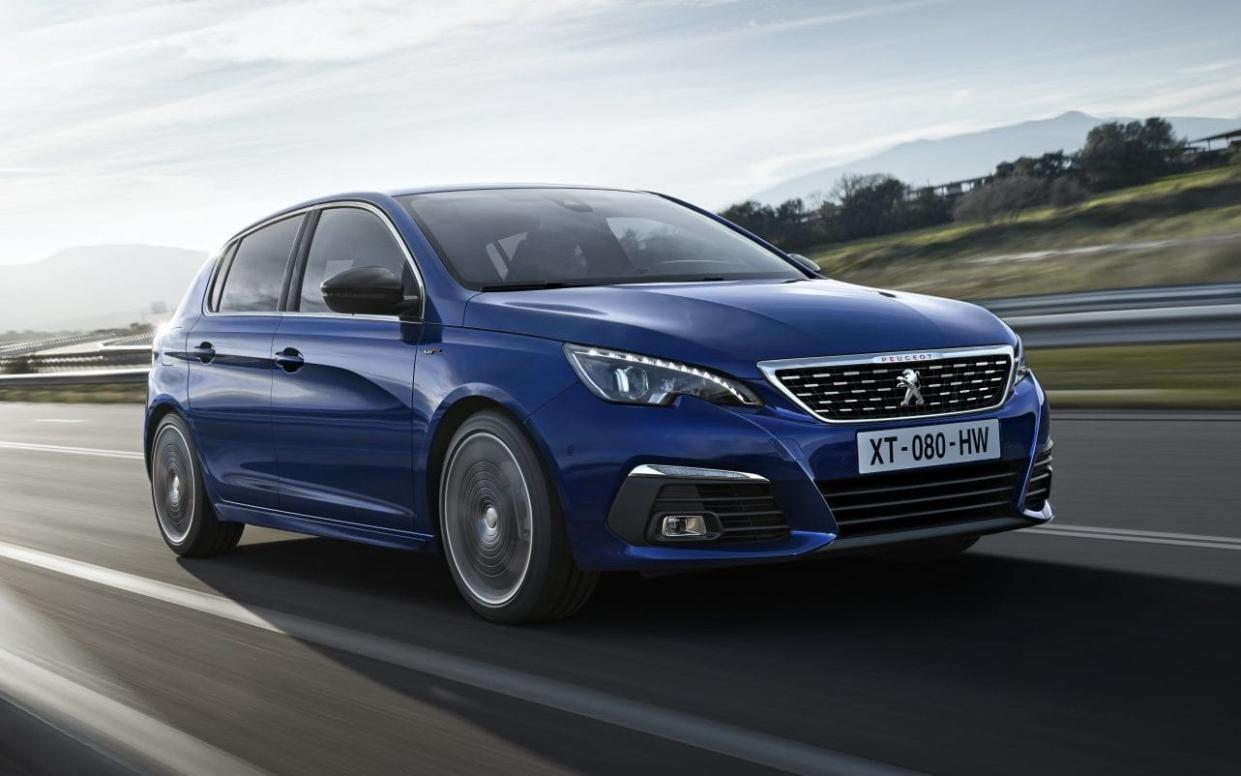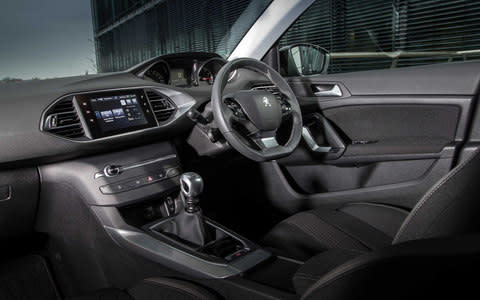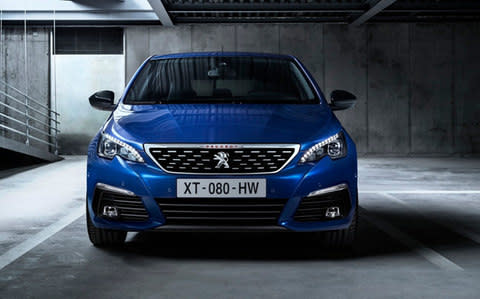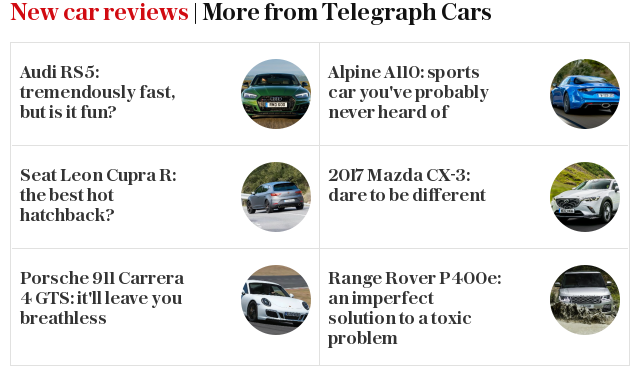Peugeot 308 1.5 BlueHDI review: putting diesel back on the menu

When the current generation of 308 scooped the European Car of the Year crown in 2014, PSA Peugeot Citroen was not enjoying the best of times. In fact Europe’s second largest car-maker (behind Volkswagen, albeit by a long chalk) had endured four consecutive years of losses, and in the end it required a bailout by the French government and Chinese manufacturer Dongfeng Motors before the tide started to turn.
Turn it did though, and with the inevitable costcutting and plant closures, plus a slowly improving range of cars and growth in key markets, Peugeot began its comeback.
By early 2017 it was not only out of the red, but enjoying profits that had nearly doubled year on year, ultimately giving PSA the confidence to take over Opel/Vauxhall from General Motors in search of greater scale. At the same time dealers welcomed distinctive and desirable SUVs such as the 3008 and 5008, cars that at last could claim to be not just competitive, but in many ways class-leading. What a difference a few years makes.
Amongst all this the 308 hatchback had sold well enough, appealing to buyers with its combination of technology, upmarket fit and finish, and low running costs. However, with several key rivals - including the Volkswagen Golf, Vauxhall Astra and Renault Megane - benefitting from mid-life facelifts or all-new models in the last few years it’s no surprise to see Peugeot follow suit with a nip and tuck of its own.
Not that you’d know as much at a quick glance, mind. In fact it takes a trained eye to spot a post-facelift bumper or LED daytime running light from its pre-facelift equivalent, and you’d need to study the brochure to know which wheel designs had been rolled in for the refresh.

The infotainment system has also been upgraded to include TomTom Live traffic services, plus Android Auto and Apple Carplay, which takes some but not all of the confusion out of operating the system. Turning off the satnav voice guidance, for example, is still as intuitive as walking with your shoe on the wrong foot, and having to use the touchscreen simply to change the heating controls is plain irritating.
As of this facelift the 308 also becomes the first of what will be many PSA Group cars to use the firm’s new 1.5-litre diesel engine. Known as the BlueHDi 130, this four-cylinder unit replaces the 1.6-litre BlueHDi 120, but has more power (10bhp, believe it or not) while the fuel economy has improved by up to 6 per cent.
Apparently this little engine borrows technology from Peugeot’s Le Mans-winning 908 (in particular its piston geometry), which sounds promising. It also gains the latest version of Peugeot’s emissions control system to more effectively treat NOx. As with VW’s diesels, this system requires the driver to top up with AdBlue when prompted, which is done via a tube next to the fuel filler cap.

The result is an engine that in the Allure-spec 308 hatchback we tested has an official average fuel consumption of 76.3mpg on the EU Combined cycle and CO2 emissions of 96g/km. That’s about as good as you can expect from a non-electrified family car with 128bhp.
Not that you’ll be getting 76.3mpg in the real world, of course, but in fairness to Peugeot it does admit as much. In fact, there’s even a widget on its website that gives a more accurate idea of what kind of fuel economy you should manage, which would be more useful if the 1.5 diesel had been incorporated. Until then I can report that over 500 miles of motorway, town and A-road driving we averaged 54.3mpg. With our car having only 150 or so miles on the clock at the beginning of the test we would expect this to improve once it’s properly run in.
I’d be inclined to dispute Peugeot’s claim that the 1.5 feels like one of its 2.0-litre units, however, because you simply can’t hide a 50bhp power deficit that easily. But it is certainly potent enough given the low running costs, and easily transported our family of four plus luggage without ever feeling underpowered. A sub-10 second 0-62mph time supports this, while the engine feels smooth as far as four-cylinder diesels go.
It was, however, useful that two of our four family members are aged under five, because space in the back seats is tight. To prove as much I’m 5ft 11 and tried sitting behind a driver’s seat set for myself. My knees weren’t quite jammed into the back of the chair in front, but they weren’t far off. Additionally, while the glass roof of Allure spec models looks great it also robs the 308 of headroom.

What the squeezed rear accommodation does mean, however, is that the 308’s boot is seriously impressive. You get almost 100 litres more space than in a VW Golf or Renault Megane – which is especially useful when you’ve got young children, what with all the buggies, scooters and travel cots this entails.
As far as ride and handling goes, nothing has changed for this facelift. As such the 308 remains entirely competent if largely unexciting. The small steering wheel - part of Peugeot’s i-Cockpit design - gives pretty impressive front end response but feels eerily remote, and not all drivers will get on with the fact the wheel has to sit in your lap in order for you to see the main instrument dials. After experiencing how the i-Cockpit has evolved in cars such as the 3008 it’s also hard not to think the 308’s design feels a little safe by comparison.
As one final gripe it would be nice if the six-speed manual gearbox was a little more compliant, but even so this new diesel is clearly the pick of the 308 range for high-mileage drivers. At the same time they might also want to spec some of the active driver aids Peugeot has added, such as blind spot monitors and autonomous emergency braking, all of which helps to close the gap on rivals.
True, the 308 is still not a class leader, but in a highly competitive market it does at least once again give buyers something else to consider.
THE FACTS
Peugeot 308 Allure 1.5 BlueHDi 130 S&S
TESTED 1,499cc four-cylinder diesel, six-speed manual gearbox, front-wheel drive
PRICE/ON SALE £22,000/now
POWER/TORQUE 128bhp @ 3,750rpm/221lb ft @ 1,750rpm
ACCELERATION 0-62mph in 9.8 seconds
TOP SPEED 127mph
FUEL ECONOMY 67.3mpg/76.3mpg (EU Urban/Combined). On test 54.3mpg
CO2 EMISSIONS 93g/km
VED £120 first year, then £140 per year
VERDICT Visually the 308’s facelift is modest to the point of being unnoticeable, but the new 1.5-litre diesel engine has real merit. It’s smooth, reasonably powerful and should be cheap to run, too.
TELEGRAPH RATING Three out of five stars
For tips and advice, visit our Advice section, or sign up to our newsletter here


 Yahoo News
Yahoo News 
